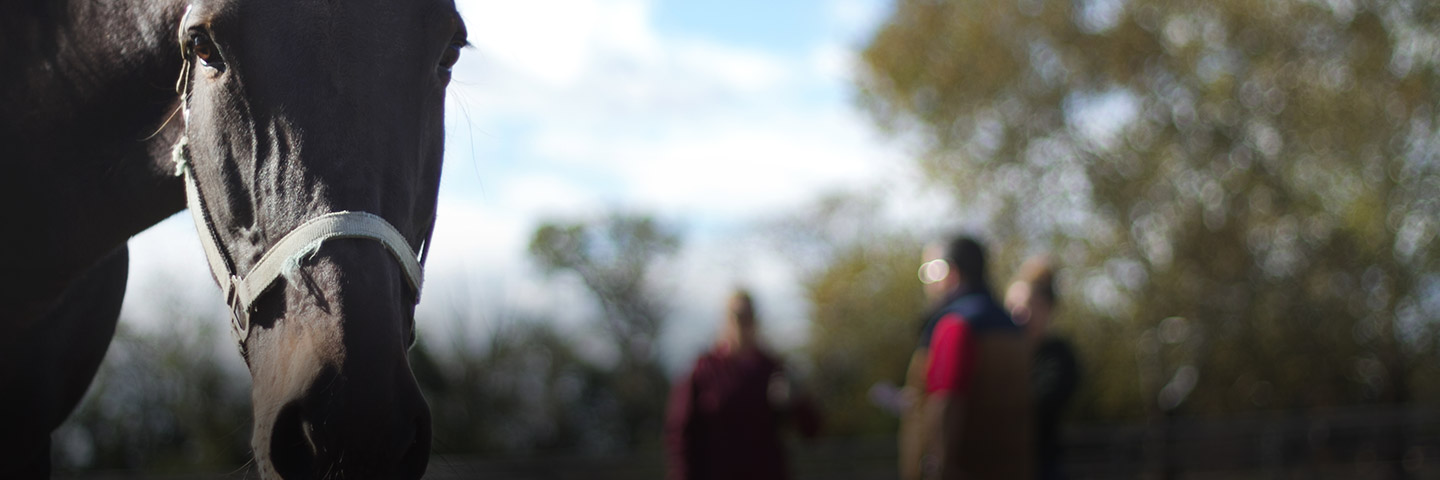Hay Everyone!
Do you remember me promising you another exciting surprise for the Month of the Horse? Well, it’s here! This year the Month of the Horse will include an Equestrian Safety Awareness Week. Equestrian Safety Week will be June 5th through 11th this year. This is the perfect time to check your tack room and make sure all that safety equipment is up to date. If it’s not, you might want to visit your local tack store to replace or purchase what you need. Many of the New Jersey tack stores will be offering discounts. Watch our social media accounts for a full listing of the tack stores offering discounts during Equestrian Safety Week. Let’s take a quick look at some important considerations for keeping yourself safe around horses.
A well-fitting helmet is one of the best ways to protect yourself from serious injury when riding and driving. Riding is considered one of the most dangerous sports in the United States because injuries are more likely to be severe and require hospitalization than injuries resulting from other sports. Traumatic brain injuries (TBI) are one of the most common injuries reported among those injured while riding. If you want to check out more of the facts and statistics on equestrian injuries, take a look at this factsheet from the Ohio State University. The good news is that a well-fitting helmet can significantly reduce your chances of a head injury.
How do you tell if your helmet fits well? The first step is to check where the edges of the helmet lie on your head. The front edge should sit approximately one inch above your eyebrows. Helmets lying higher than this leaves your forehead exposed to injury while those sitting lower can block your field of view. The back of your helmet should sit above the top of your neck, but cover the back of your head. As your try your helmet on, it should feel snug and not move if you nod your head up and down or shake it side to side. The adjustable chin strap should fit snugly but not tightly under your chin (adjust it so that you can fit one to two fingers between the strap and your chin) with the sides adjusted such that a “v” is formed right under your ear.
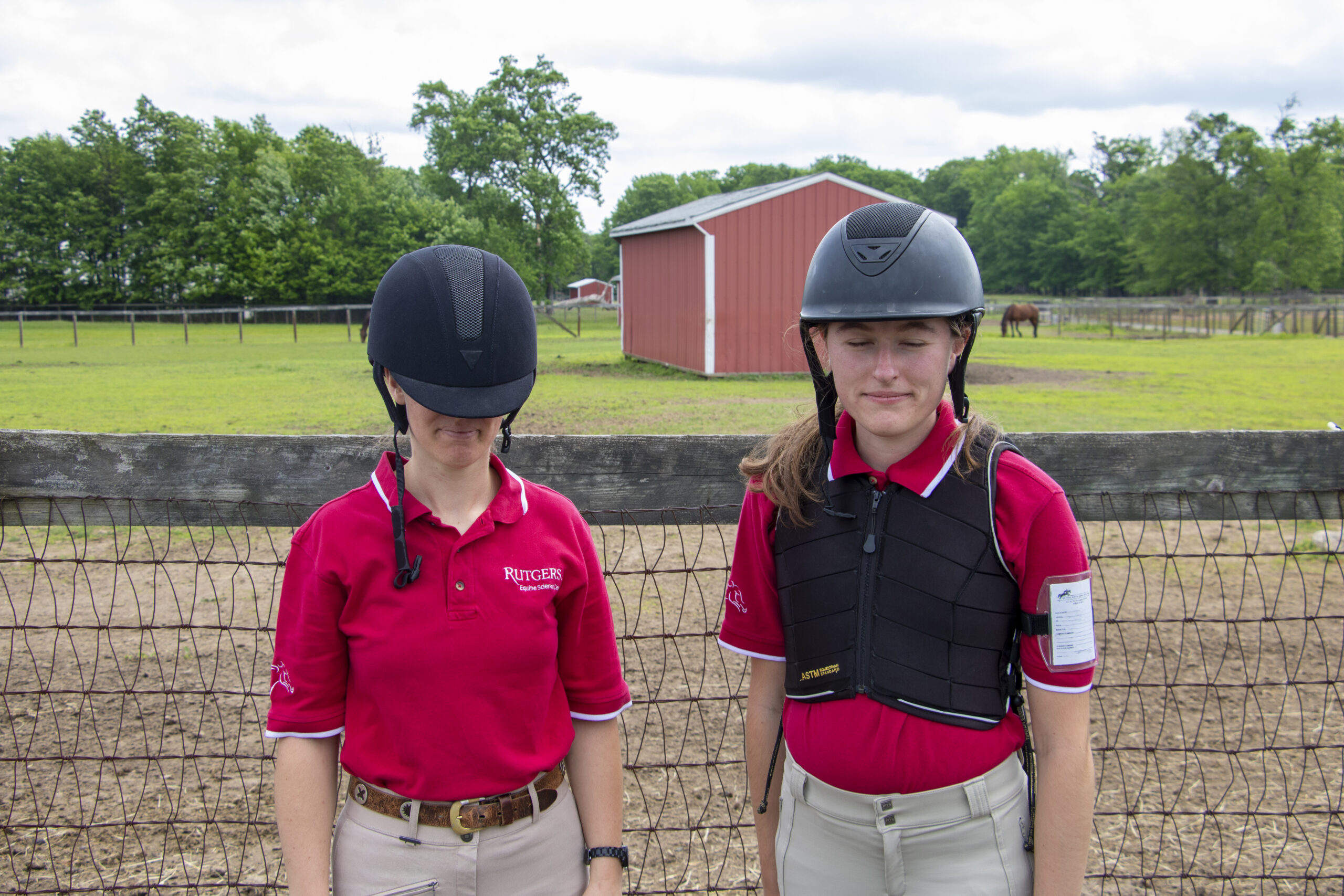

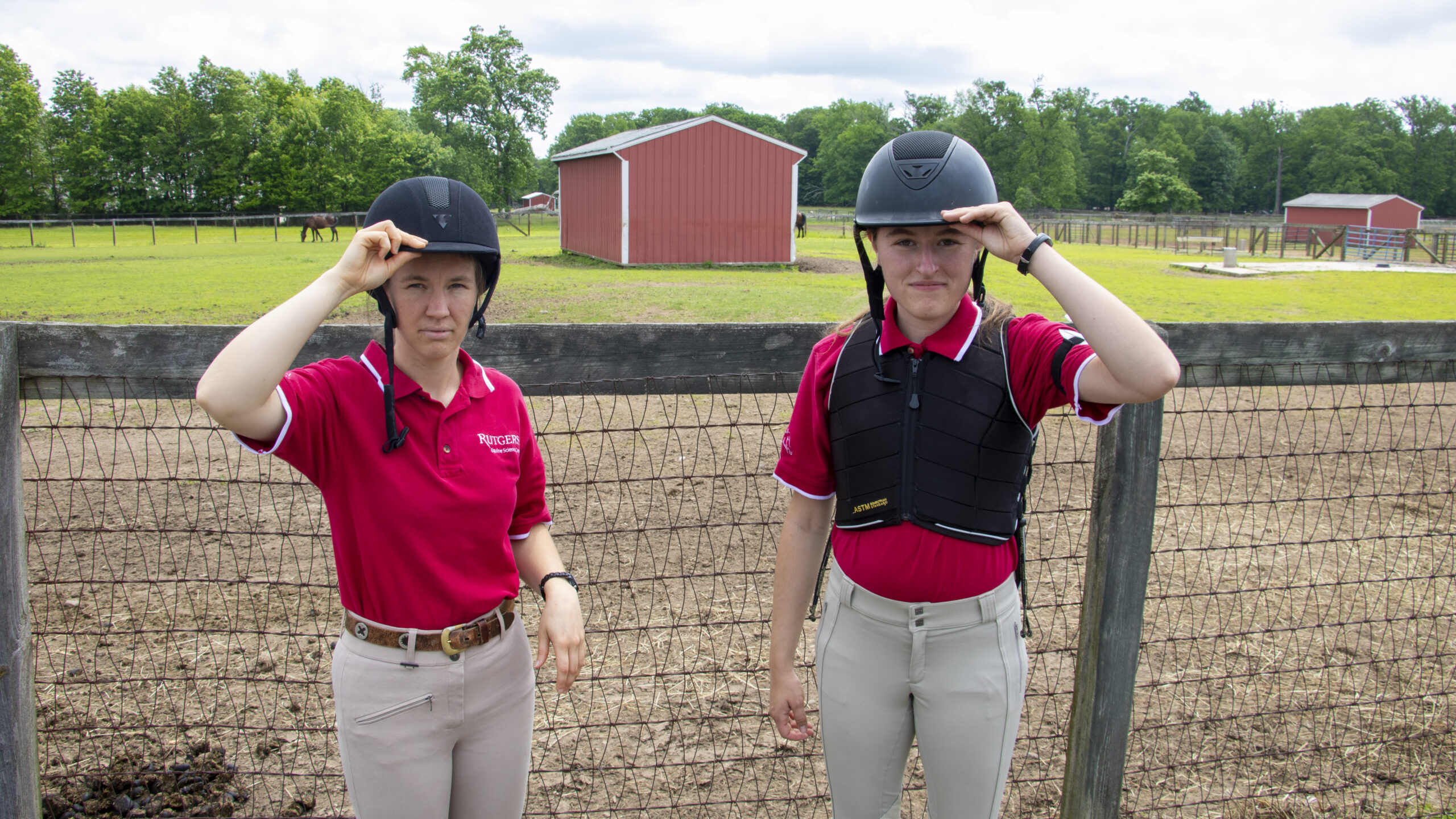

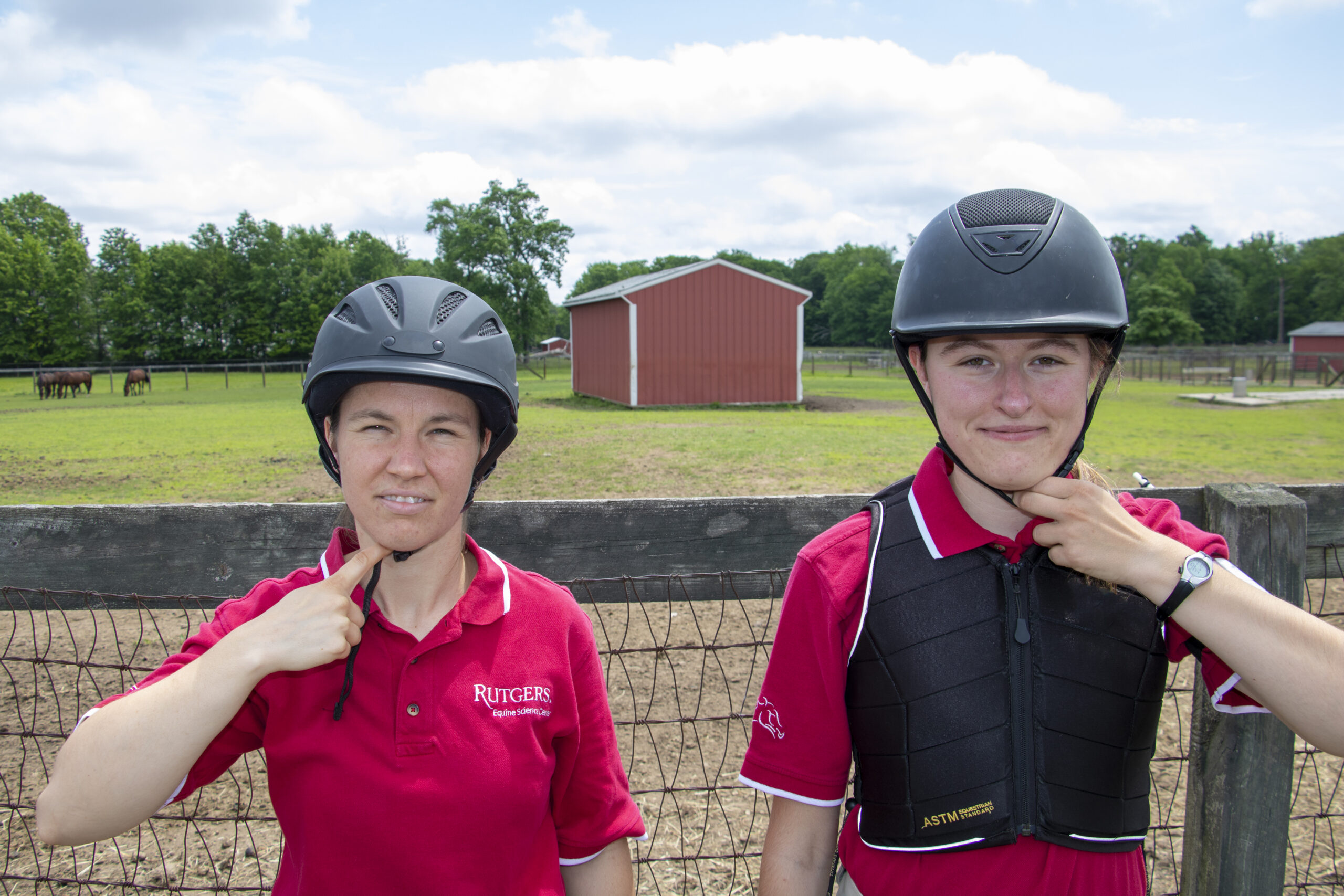
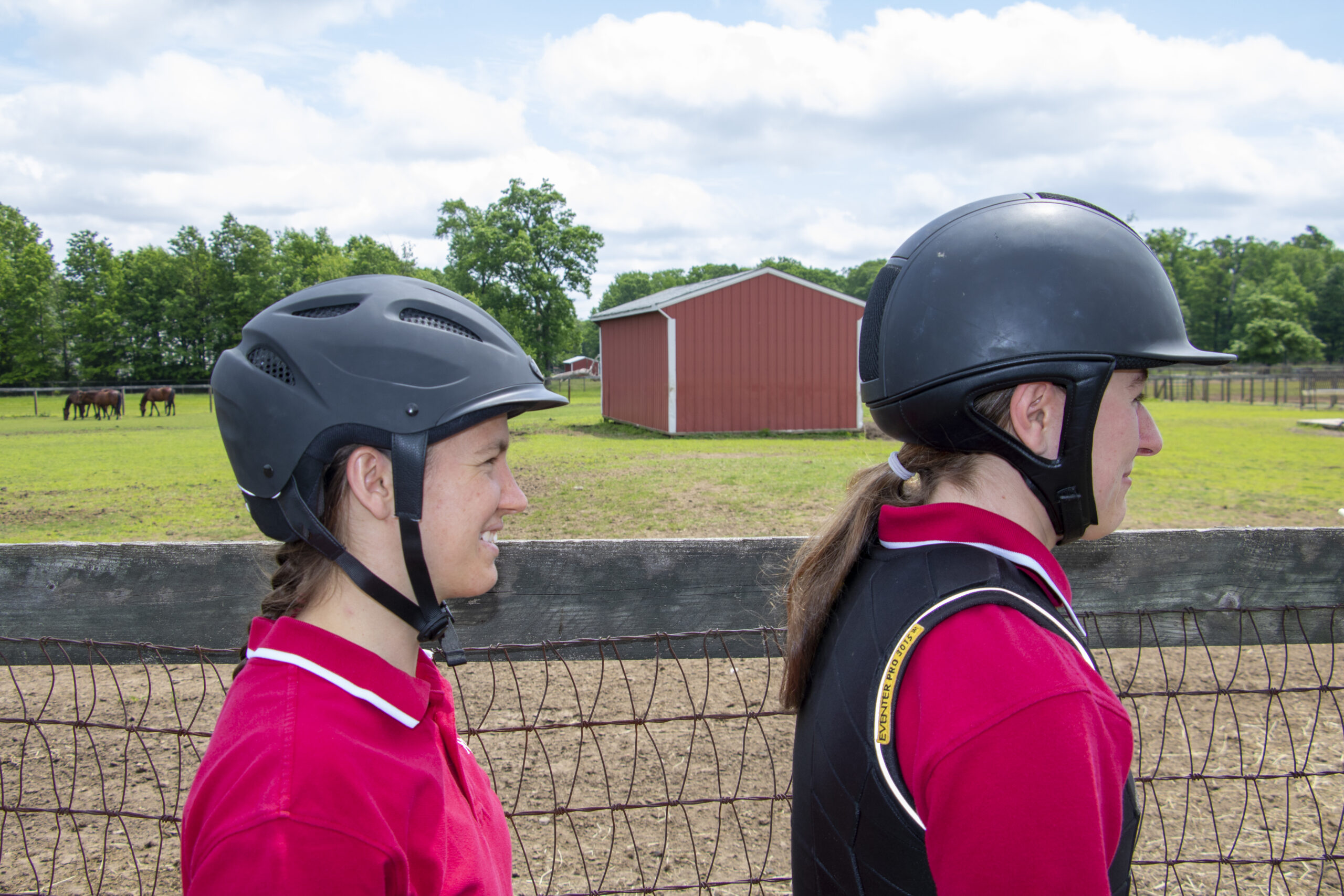
It is important to purchase a helmet that fits well and adjust it for yourself. It is VERY important to purchase a helmet specifically designed for equestrian activities. Helmets designed for other sports and activities such as bike riding do not offer the correct protection for riding and working around horses. You’ll also want a helmet that is certified by the ASTM, SEI, or Snell. This information will be listed on the helmet and packaging. These organizations apply rigorous testing and quality control to the helmets to make sure they will provide the protection you need. For more information on these organizations and their certifying processes, you can take a look at this factsheet that is a part of the CDC’s Heads Up initiative or visit the individual organization’s website. The tag in your helmet should also list the date of manufacture. This information is important to keep track of because helmets should be replaced every 5 years. Helmets should be replaced sooner than this, if they are dropped or you fall while wearing the helmet. This holds true even if there is no visible damage to the helmet. The inner portion of the helmet that absorbs impact may have been damaged by the impact and you wouldn’t know. Some riding helmet manufacturers will replace your helmet after a fall or give you a discount on your new helmet, so it’s always a good idea to check with them before purchasing a new one.

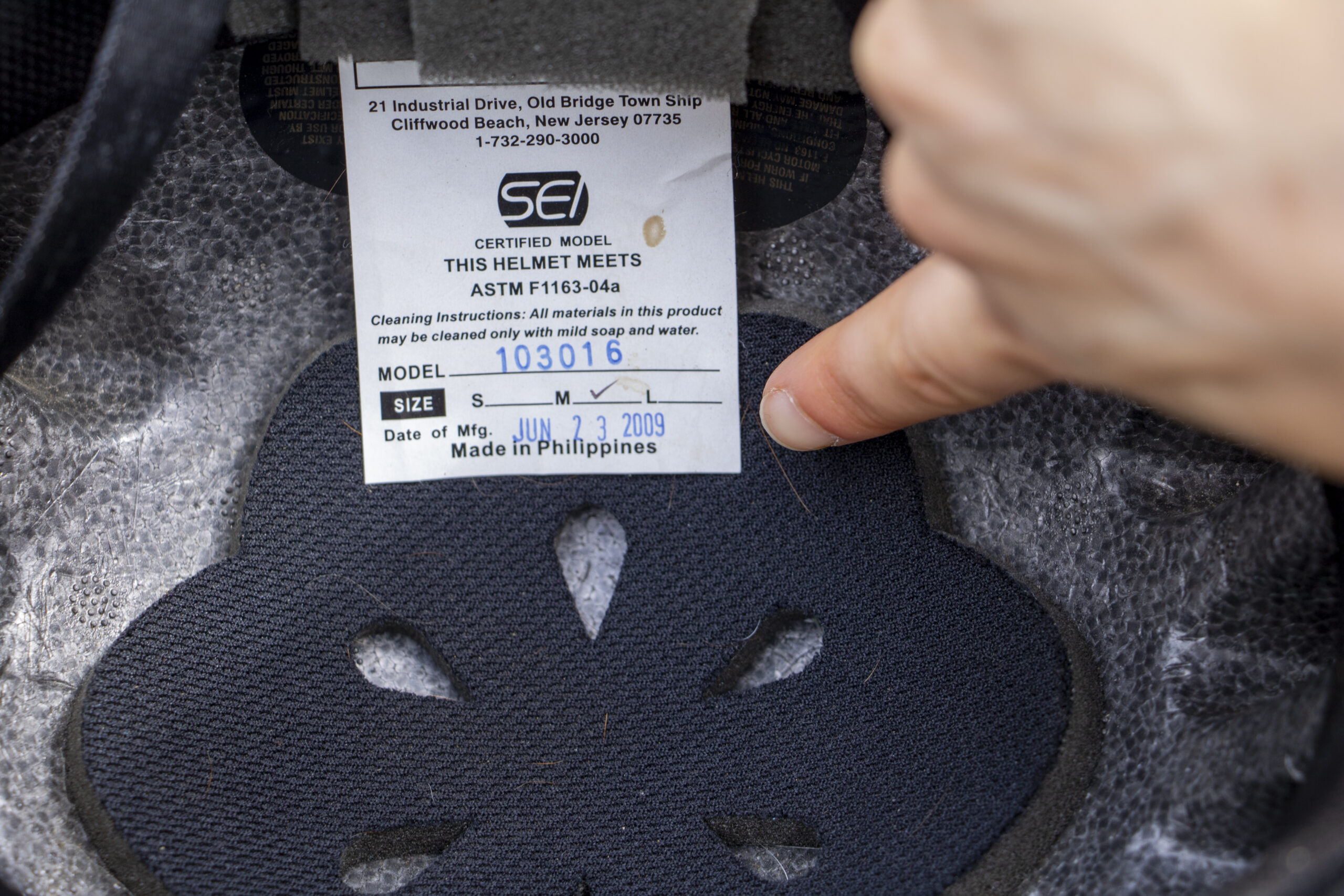
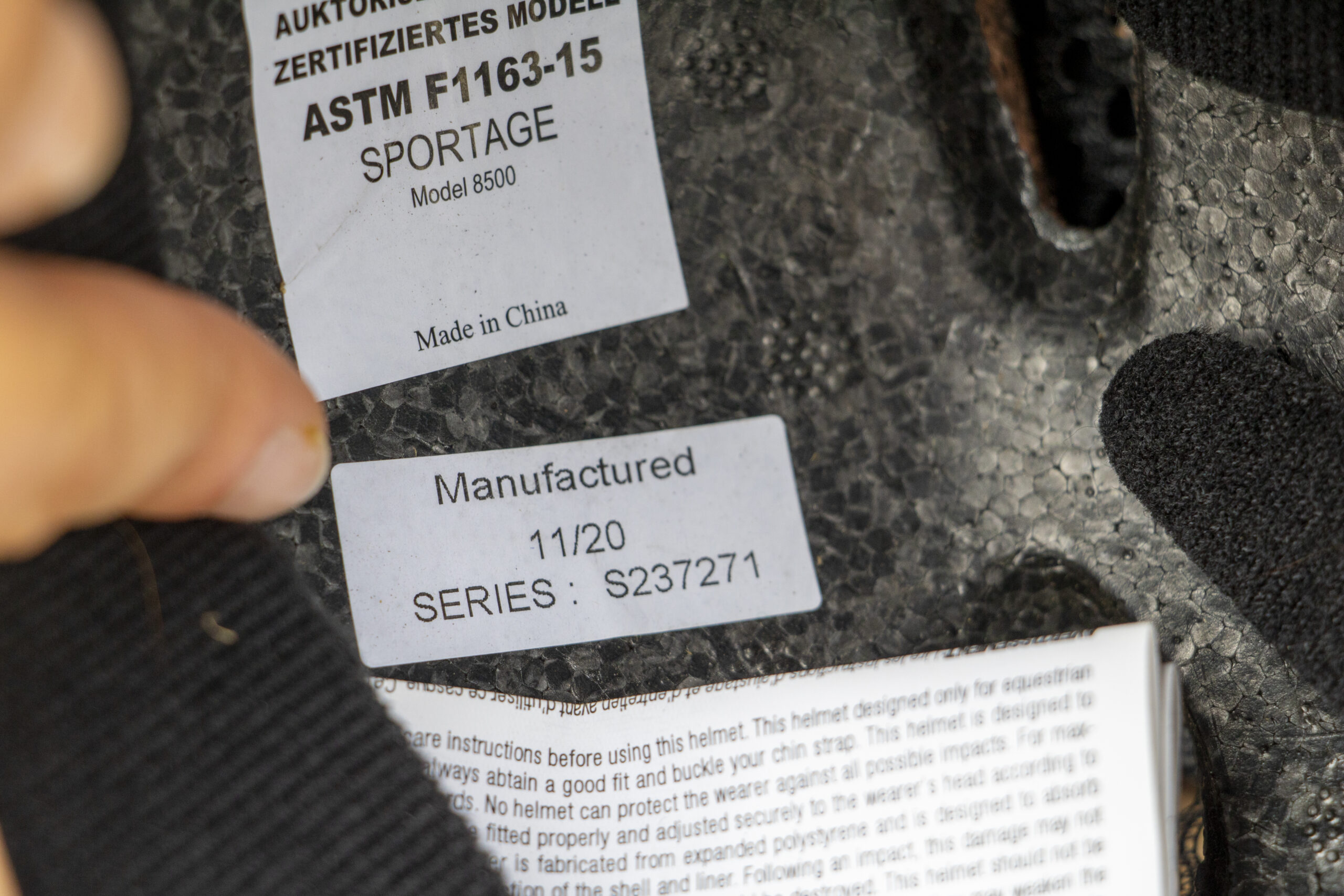
If you take a look at your helmet and realize it’s time or past time to replace it, you’ll want to visit a participating New Jersey tack shop during New Jersey’s Equestrian Safety Awareness Week. Most of these tack stores will be offering discounts on safety equipment.
Another piece of equipment it might be a good idea to have for riding and other equestrian activities is a safety vest. Foam safety vests are designed to protect the torso during a fall. Like helmets, safety vests must fit properly to be effective. A vest should fit snugly, but comfortably. In the front, it should reach from your neck or collarbone to the bottom of your ribcage and should extend all the way to the bottom of your tailbone in the back. The best vests will also be certified by a testing organization such as the ASTM. Air vests can be worn over a traditional safety vest, but should not be used in lieu of a safety vest. The United States Equestrian Federation provides some good information on air vests. These air vests are designed to expand by releasing air from a canister if a fall occurs. Safety vests need to be replaced every 3-7 years. Check with the manufacturer of your vest for more specific recommendations. If you fall in your vest, you’ll need to inspect it visually for damage. If there is damage, you’ll definitely need to replace the vest. If not, you may not have to replace it.
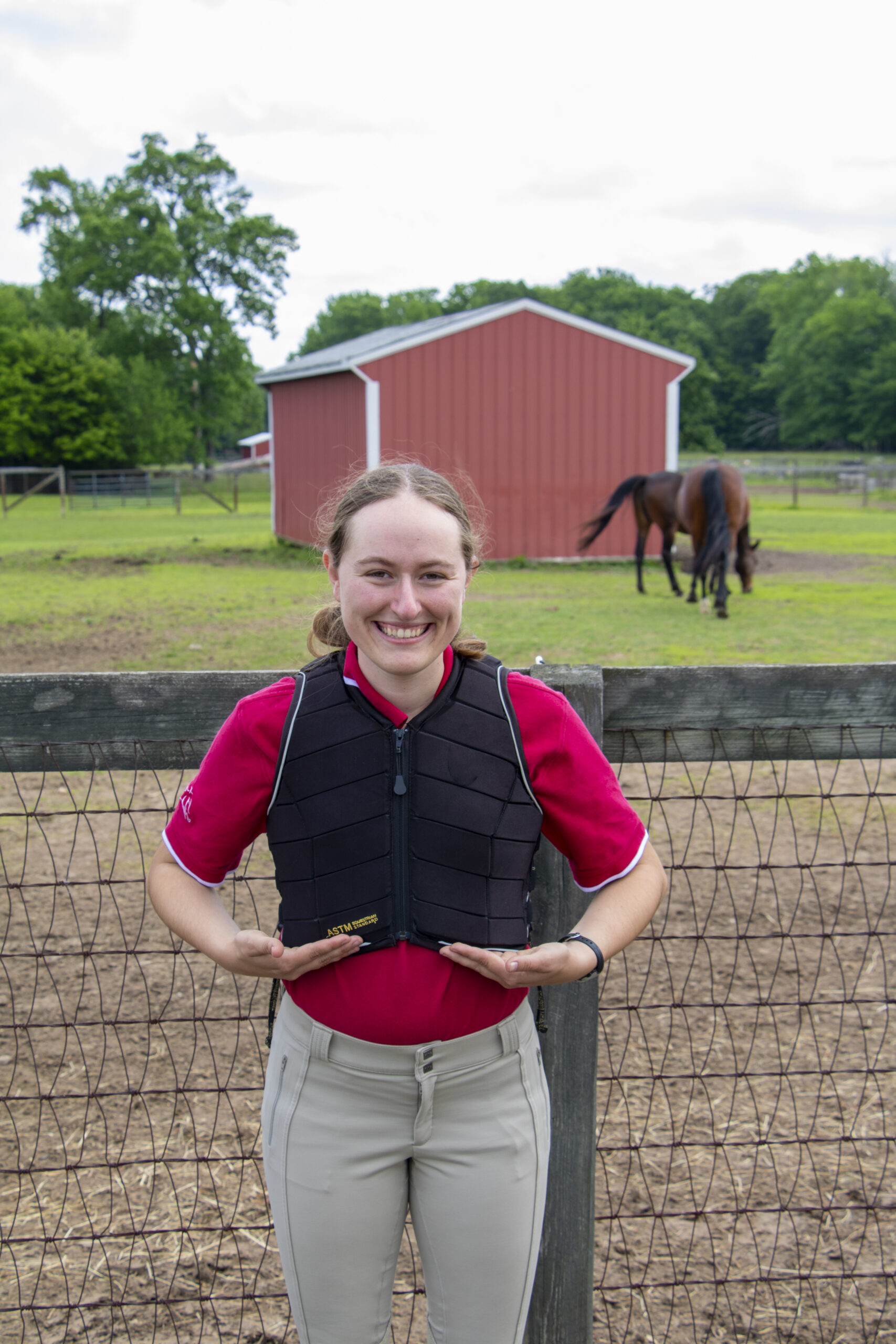
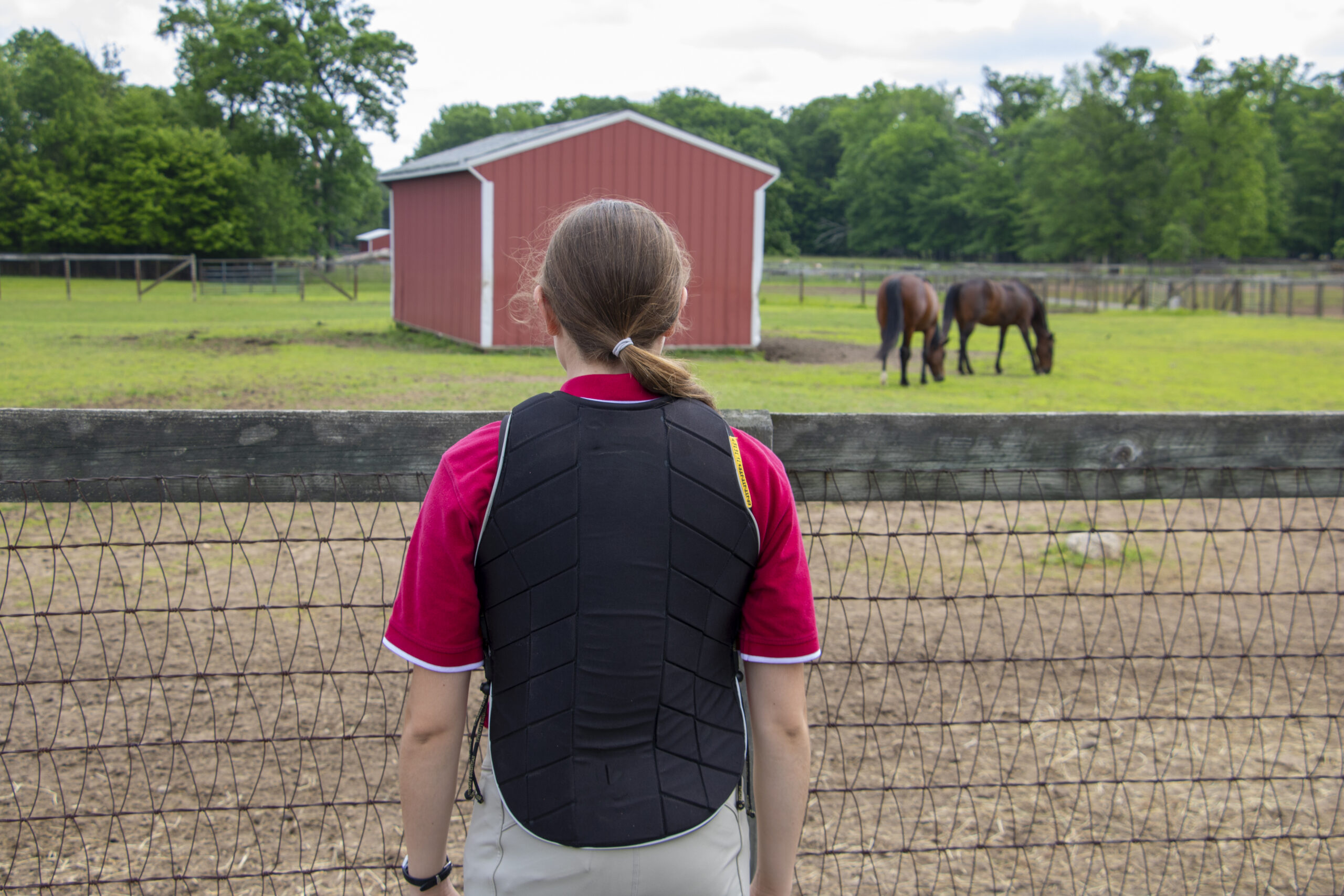
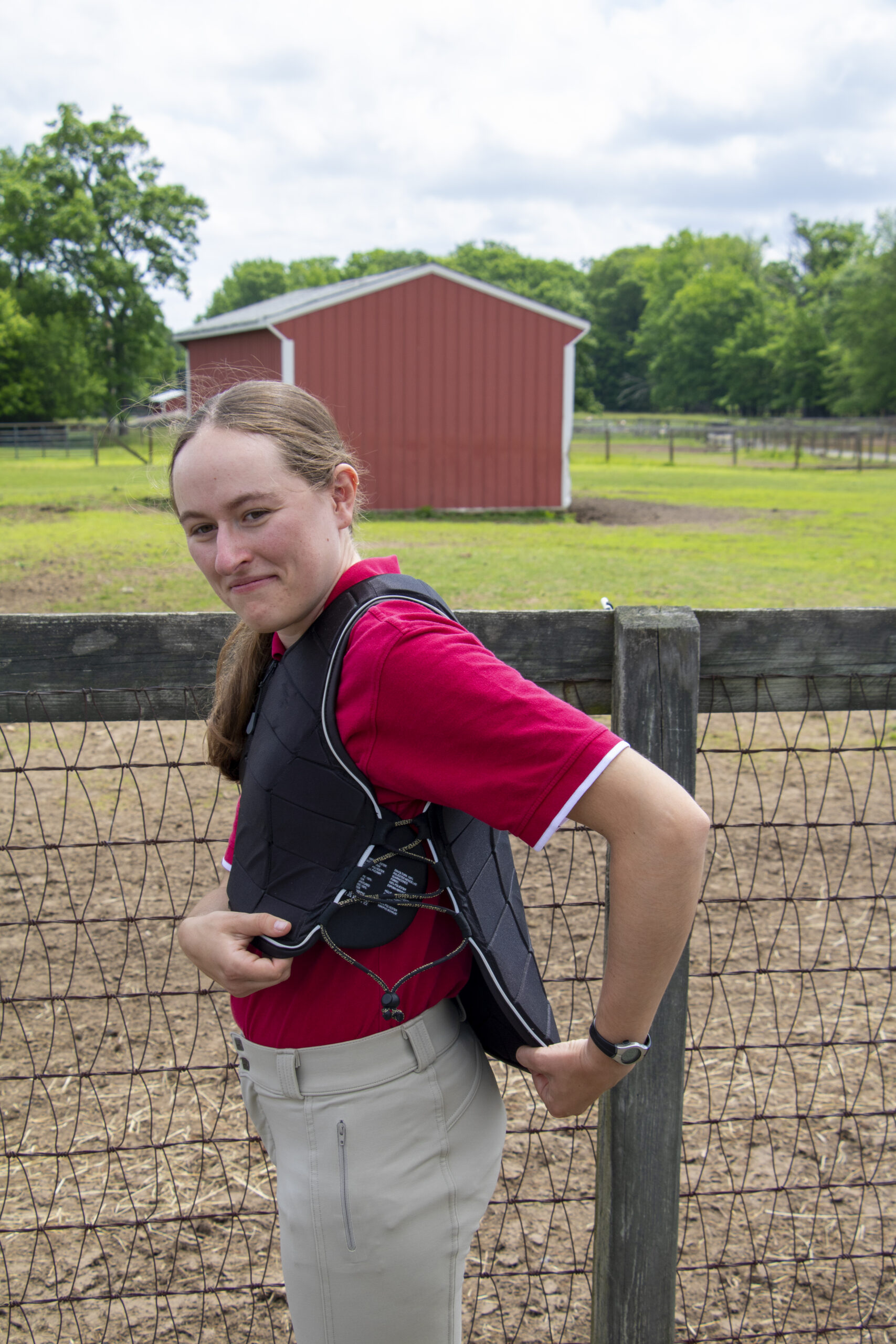

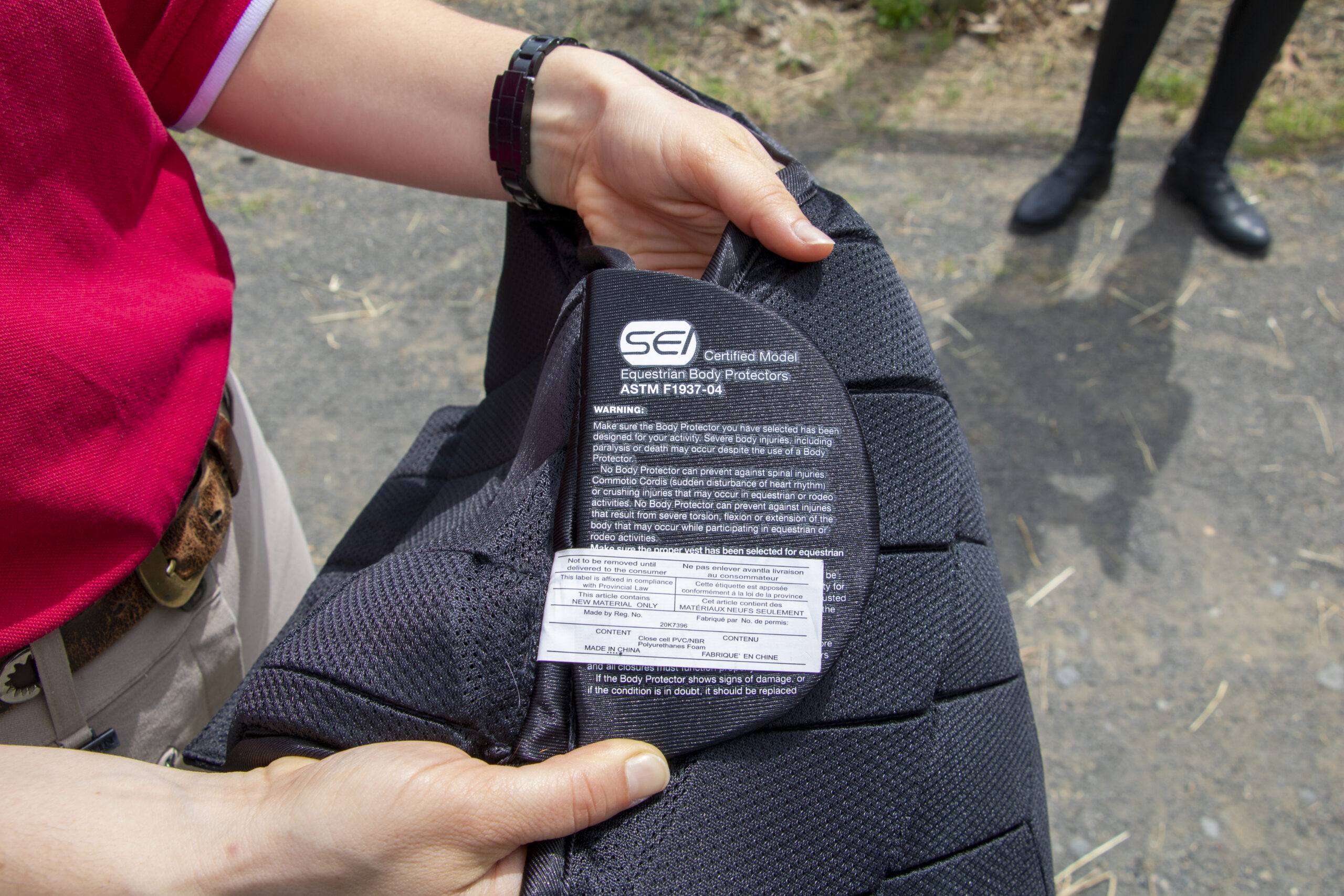
Helmets and vests are some of the most important pieces of safety equipment you can use. There are lots of other ways to keep yourself safe, though. Wearing reflective clothing or vests when riding near roads or in the dark is a good idea as they will make you and your horse more visible. Wearing hunter orange if riding in the woods, especially if you ride in an area that hunters frequent, is a good idea. A medical armband is required in some types of competition, but can also be a good idea in other scenarios. You can also help keep yourself safe by performing periodic checks of your tack and other equipment to replace worn, broken, or loose parts. Putting in a little time and effort to routinely monitor and check your equipment, especially your safety equipment can keep you safe for years to come! This means you’ll be able to keep enjoying time with your horse!
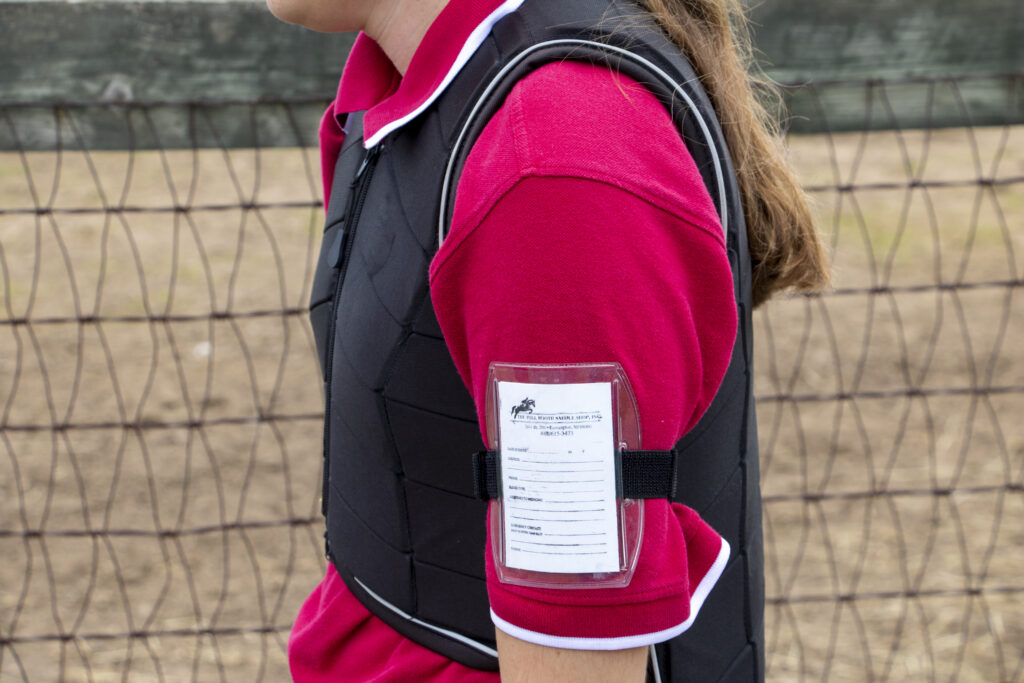
A medical armband can provide valuable information in an accident.
Be sure to follow us on Facebook (Rutgers Equine Science Center) and Instagram (RU Equine Science) for updates throughout Equestrian Safety Awareness Week! We’ll be inviting you to share pictures of yourself in your new equestrian safety gear for a chance to win cool prizes. Be sure to tag your photos using #NJESW.
Stay Safe!
Your Friend,
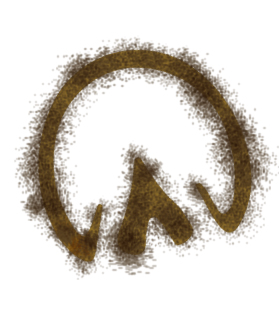
Lord Nelson

